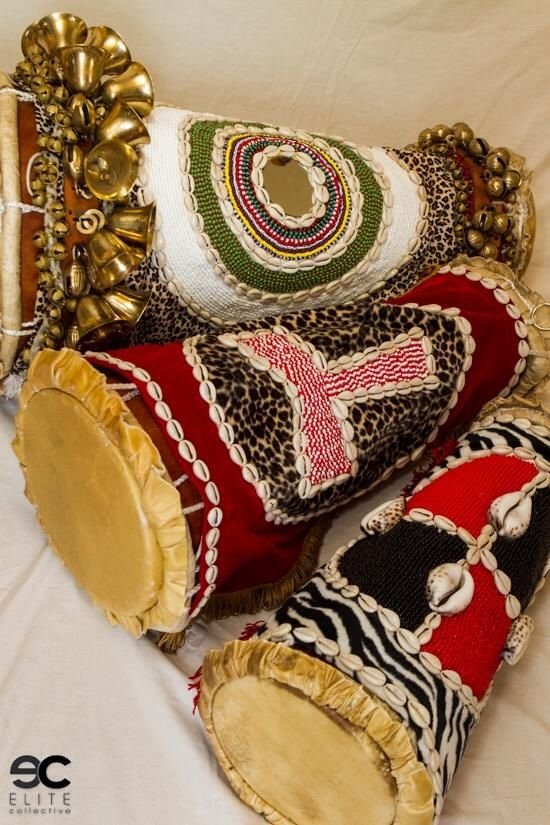
Who has not enjoyed dancing a good Salsa? Who has not been delighted with the cadence of a Son? The refined movements of Danzón. Who has not been involved and seduced by the enigma that surrounds Afro-Cuban music or danced to exhaustion to a good Rumba in a Havana's lot? Well, all these Cuban rhythms have one element in common: "The Drum" That compendium of woods, strings and leathers that at present has suffered (in the good sense) transformations and mixtures of components although it has not lost its essence nor its sonority, but if a little of its tribal character although that has been part of its evolution and its entrance to the complex world of music, the mixtures and the fusion that has allowed it to be present in several genres, styles and rhythms due to its most important property that is to contribute colors and different and very rich percussive sonorities when mixed with other analogous and electronic sounds.
*Quien no ha disfrutado bailando una buena Salsa? Quien no se ha deleitado con la cadencia de un Son? Los refinados movimientos del Danzón. Quien no se ha visto envuelto y seducido por el enigma que envuelve la música afrocubana o ha bailado hasta el cansancio una buena Rumba en algún solar habanero? Pues todos estos ritmos cubanos tienen un elemento en común: “El Tambor” Ese compendio de maderas, cuerdas y cueros que en la actualidad ha sufrido (en el buen sentido) transformaciones y mezclas de componentes aunque no ha perdido su esencia ni su sonoridad, mas si un poco de su carácter tribal aunque eso ha sido parte de su evolución y de su entrada al complejo mundo de la música, las mezclas y la fusión que le ha permitido estar presente en varios géneros, estilos y ritmos debido a su propiedad más importante que es aportar colores y sonoridades percusivas diferentes y muy ricas al mezclarse con otros sonidos análogos y electrónicos.

Having said this, let's go back in the time machine to know and understand a little of the origins of such a famous instrument from its roots "El Tambor de Cuba para el mundo" (The Cuban Drum for the world).
Dicho esto volvamos atrás la máquina del tiempo para conocer y entender un poco los orígenes de tan famoso instrumento desde sus raíces “El Tambor de Cuba para el mundo”
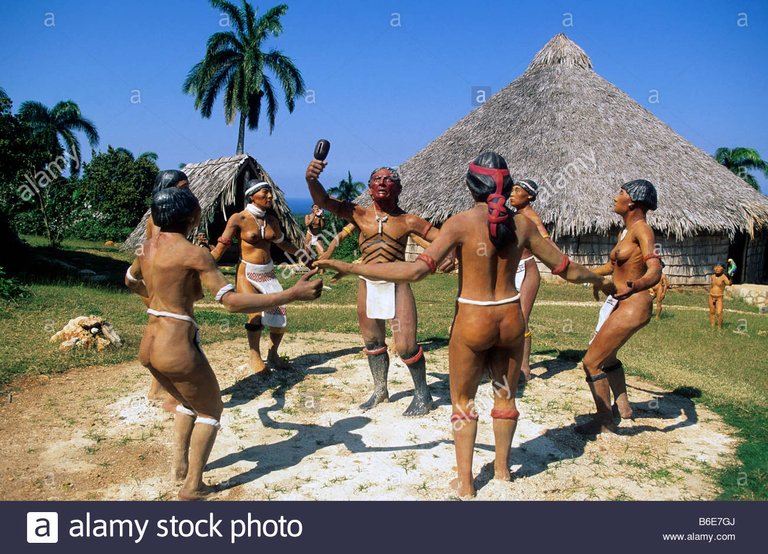
In the "colonial times". Cuba was colonized and administered by the Spaniards and their kings, which generated discomfort due to their ferocious way of exploitation, which triggered confrontations and violent events recorded in history, between the colonizers and the "Taino" Indians (The Tainos were the pre-Columbian inhabitants of the Bahamas, the Greater Antilles and the north of the Lesser Antilles). In this case, emphasis will be placed on the specific situation on the island of Cuba, the object of our research. These lawsuits, epidemics of diseases such as smallpox, resulted in the declaration of the Taino race as extinct by the year 1565, and the loss of their music, religion, customs and culture, leaving in the few archaeological findings obtained to date the only connection with that extinct race.
En los “tiempos de la colonia”. Cuba estaba colonizada y administrada por los españoles y sus reyes, generando esto molestias debido a su modo feroz de explotación, lo cual desencadenó en confrontaciones y hechos violentos recogidos en la historia, entre los colonizadores y los indios “taínos” (Los taínos fueron los habitantes precolombinos de las Bahamas, las Antillas Mayores y el norte de las Antillas Menores). En este caso se hará énfasis en la situación específica en la isla de Cuba, objeto de nuestra investigación. Dichos pleitos, las epidemias de enfermedades como la viruela, trajeron como consecuencia que para el año 1565 se declarara extinta la raza taína, y la pérdida de su música, religión, costumbres y cultura, dejando en los escasos hallazgos arqueológicos obtenidos hasta la fecha la única conexión con esa raza extinta.
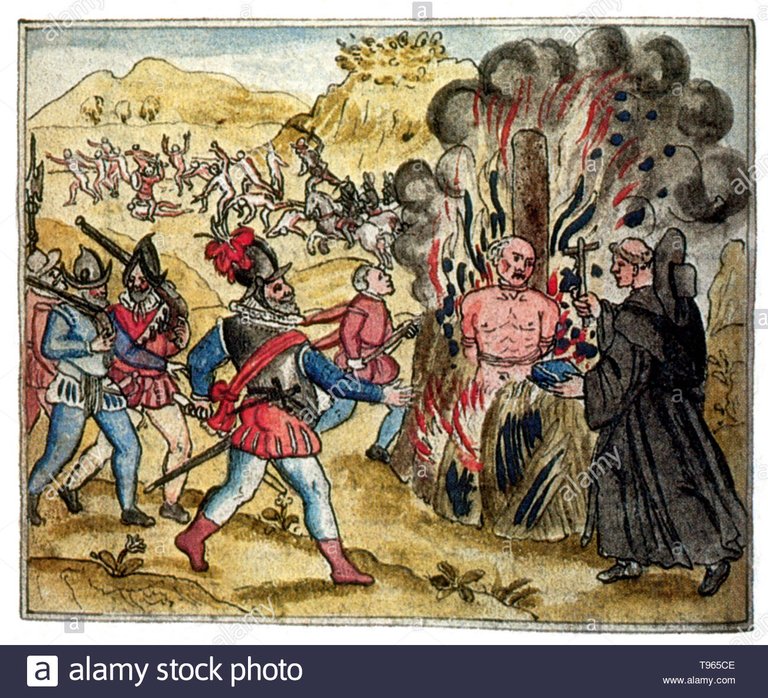
The extinction of the native Cuban Indians brought as a consequence the lack of cheap labor for forced labor and the Spaniards as feudal lords and landowners needed cheap and more resistant labor force since the Indians got sick easily and could not resist the workload and the punishments and tortures to which they were subjected, therefore, they ventured to recruit the so-called "black slave labor", formed by Africans. Because they could not deceive the natives with trinkets or objects such as combs or scissors, which was their way of deceiving the Native Americans, they had to do it by force and in this "forced recruitment" they took many natives regardless of their ethnicity or lineage and could be a common citizen, as well as important people within the tribe, such as sorcerers and healers to members of royalty. The only important thing was that he looked strong and healthy to perform heavy labor functions.
La extinción de los indios nativos cubanos trajo como consecuencia la falta de mano de obra barata para los trabajo forzados y los españoles como señores feudos y terratenientes necesitaban fuerza laboral barata y más resistente ya que los indios se enfermaban con facilidad y no resistían la carga de trabajo y los castigos y torturas a los que eran sometidos, pues, se aventuraron a reclutar la llamada “mano de obra esclava negra”, formada por africanos. Y así se dirigieron en sus flotas hacia África a una especia de safari humano en busca de “trabajadores”, Debidos a que no pudieron engañar a los nativos con baratijas u objetos como peines o tijeras, que era su modo de engañar a los nativos americanos, tuvieron que hacerlo por la fuerza y en ese “reclutamiento forzoso” se llevaron muchos nativos sin importar su etnia ni linaje pudiendo ser un ciudadano común, al igual que personajes importantes dentro de la tribu, como brujos y curanderos hasta miembros de la realeza. Lo único importante era que se viera fuerte y sano para desempeñar funciones de trabajos pesados.
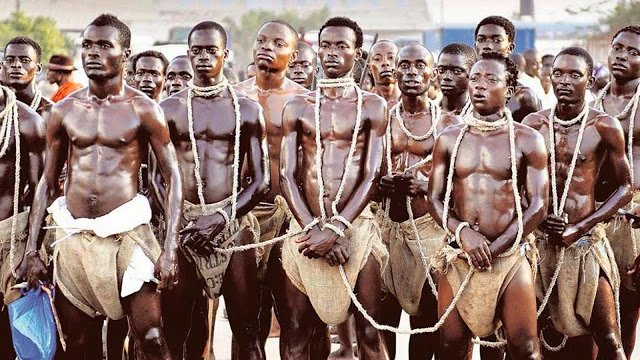
The geographical location of the island of Cuba made it the ideal center for the distribution of slaves brought from Africa to different parts of the Antilles and the American continent itself, for example, the ports of the island served as a passage for the traffic of slaves to New Orleans and other cities of the nation. So much so that the island of Cuba in colonial times was called "The Key to the New World", for being the bridge for the smuggling of slaves to the rest of the continent, in addition to other forms of illicit trade. The island of Cuba and the surrounding islands also served as a lair for pirates and corsairs, both Spanish and English. That is why so many different African ethnicities came to coexist in this part of the Caribbean.
La ubicación geográfica de la isla de Cuba la convirtió en el centro de acopio ideal para realizar la distribución de los esclavos traídos de África a los distintos lugares de las Antillas y al mismo continente americano, por ejemplo, los puertos de la isla sirvieron de paso para el tráfico de esclavos hacia New Orleans y otras ciudades de la nación. Tanto así que la isla de Cuba en tiempos de la colonia era llamada; “La llave del nuevo mundo”, por ser el puente del contrabando de esclavos hacia el resto del continente, además de otras formas de comercio ilícito. También la Isla de Cuba y las islas a su alrededor sirvieron de guarida para piratas y corsarios, tanto españoles como ingleses. Es por eso que tanta variedad de etnias africanas llegaron a convivir en este punto del Caribe.
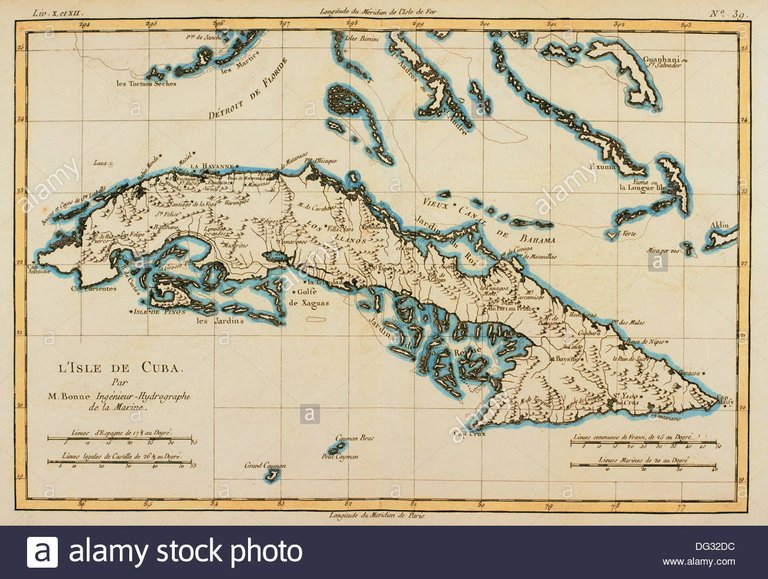
These groups of slaves came from different ethnic groups, including black Mandingas, Gangás, Minas, Lucumíes (Yorubas), Carabalíes and Congos.
Estos grupos de esclavos provenían las diferentes etnias, destacándose los negros mandingas, gangás, minas, lucumíes (yorubas), carabalíes y congos.

Thousands of slaves torn from African lands. They arrived bringing with them the only thing they could not take away from them, which was none other than their religion and their music. The intrinsic part of their customs was the main axis that allowed them to resign themselves to captivity. Their intellectual baggage, the reminiscence of freedom, together with their own customs of their soil, in intimate relationship with nature, did not damage their personality and dignity with the forced uprooting. Their livelihoods were syncretized, which allowed the different "rules" (lucumí, Congo, carabalí, arará and other minor ones), to unite with the Catholic religion and the music of the conquerors as a last resort, in order to endure as an ethnic group and its descendants, product of miscegenation. The Creole, black and European, are the multiethnic and multicultural of the Cuban society.
Miles de esclavos arrancados de las tierras africanas. Llegaron trayendo con ellos lo único que no les pudieron quitar que no era otra cosa que su religión y su música. Lo intrínseco sus costumbres fue el eje principal que les permitió resignarse al cautiverio. Su bagaje intelectual, la reminiscencia de libertad, aunadas a costumbres propias de su suelo, en íntima relación con la naturaleza, no mellaron con el forzado desarraigo, su personalidad y dignidad. Sus subsistencias se sincretizaron, lo que les permitió que las diferentes "reglas" (lucumí, Congo, carabalí, arará y otras menores), se unieran con la religión católica y la música de los conquistadores como un último recurso, a fin de perdurar como etnia y su descendencia producto del mestizaje. El criollo, negro y europeo, son lo multiétnico y multicultural de la sociedad cubana.
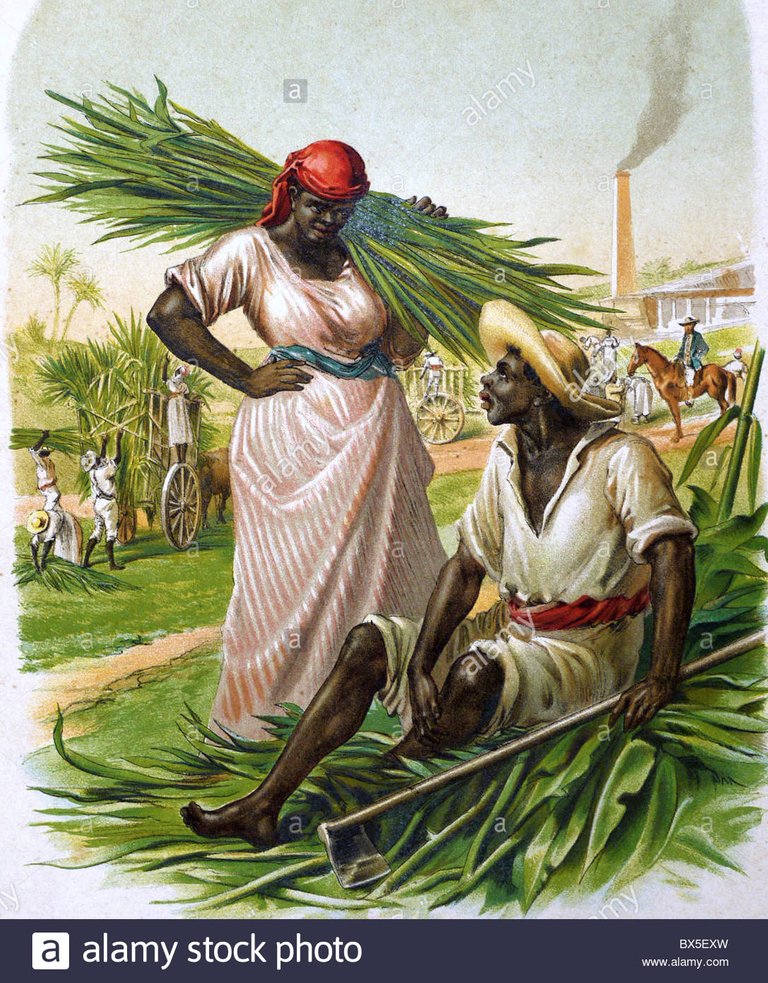
With the sugar boom of the mid-18th century in Cuba. A novelty produced by the exploitation of sugar cane and tobacco cultivation in Cuba was the massive importation of African slaves of a single ethnicity, who shared the same language, religion, and cultural practices. The presence of a critical mass of Yoruba-speaking Lucumis led to Afro-Cuban syncretism, known as Santeria. Likewise, the Igbo and Efik-speaking Carabalis of southeastern Nigeria contributed to the formation of the Afro-Cuban secret society of Abakuá. The Congos - speakers of KiKongo and other similar languages - formed the palo mayombe, while the Ararás, of the Fon-Gbe grouping of Benin and Togo, contributed some of their music and religious beliefs, especially in Matanzas.
Con el boom azucarero de mediados del siglo XVIII en Cuba. Una novedad que produjo la explotación de la caña de azúcar, el cultivo del tabaco en Cuba fue la importación masiva de esclavos africanos de una sola etnia, que compartían la misma lengua, religión, y prácticas culturales. La presencia de una masa crítica de lucumíes, de habla yoruba, conducía al sincretismo afrocubano, conocido como santería. Asimismo los carabalíes del sureste nigeriano- de habla Igbo y Efik- contribuyeron a la formación de la sociedad secreta afrocubana de Abakuá. Los Congos hablantes del KiKongo y otros idiomas semejantes- formaron el palo mayombe, mientras que los ararás, de la agrupación Fon-Gbe de Benín y Togo, aportaron algo de su música y creencias religiosas, sobre todo en Matanzas.
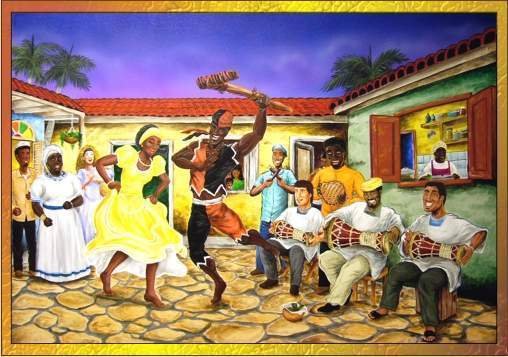
The different tribes that met in a territory far away from their kingdom shared the same deities, only varying in some rites, offerings and above all in the way of worship through songs and drumming. These ranged from the ceremonial drum "batá" to other less known drums such as the "Yuka drum", "Iyesá" and "El cajón".
Las diferentes tribus que se encontraron en un territorio muy lejos de su reino compartían las mismas deidades, solo variando en algunos ritos, ofrendas y sobre todo en la manera de adoración mediante cantos y toques de tambor. Que van desde el tambor ceremonial “batá” hasta otros menos conocidos como el “Tambor Yuka”, “Iyesá” y “El cajón”.
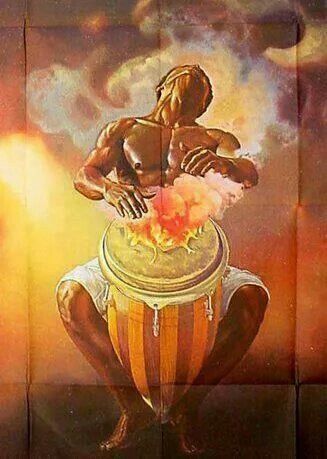
Congratulations @mrkeyboard! You have completed the following achievement on the Hive blockchain and have been rewarded with new badge(s) :
Your next target is to reach 400 upvotes.
You can view your badges on your board and compare yourself to others in the Ranking
If you no longer want to receive notifications, reply to this comment with the word
STOP